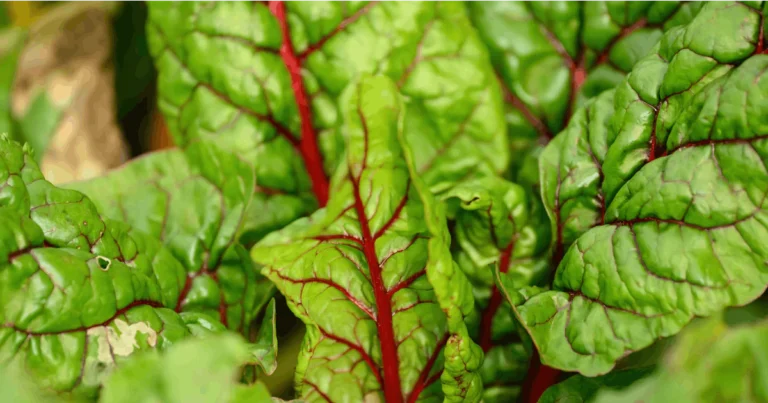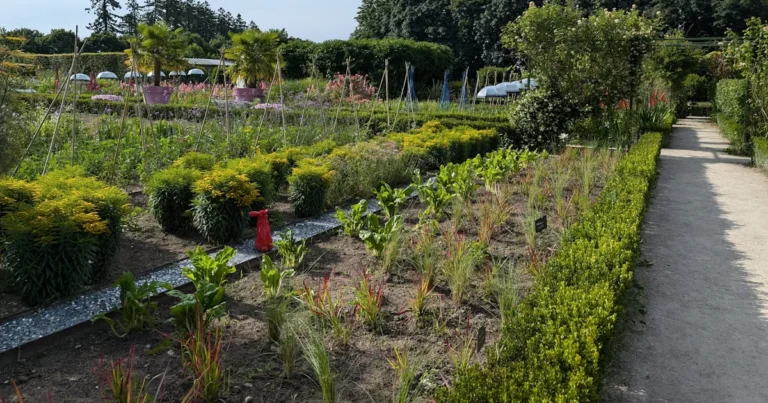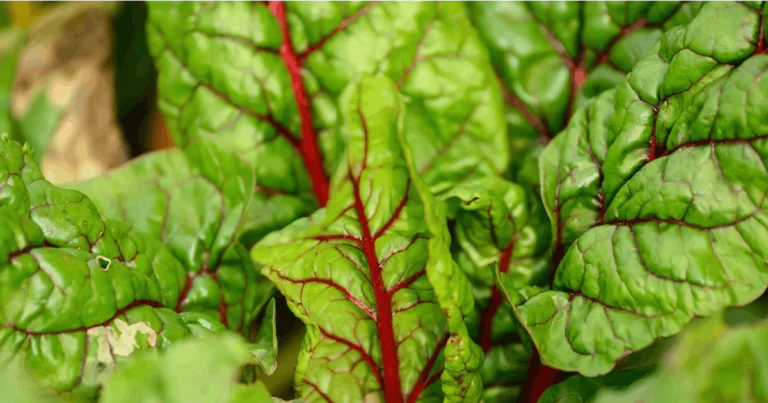Support our educational content for free when you purchase through links on our site. Learn more
Imagine a place where the scent of fresh basil mingles with stories from Ghana, Japan, and Canada—all while neighbors from different continents dig, plant, and laugh side by side. Community gardens are exactly that magical space: living, breathing hubs where cultural exchange and global understanding sprout alongside tomatoes and sunflowers. But how exactly do these green patches foster such deep connections among diverse communities?
In this article, we’ll uncover 10 powerful ways community gardens cultivate cultural dialogue, preserve heritage, and build social cohesion across the globe. From seed swaps to shared meals, from digital tools to conflict resolution, we’ll explore inspiring real-world examples from Tokushima to Barrie and beyond. Ready to discover how your local garden can become a vibrant cultural crossroads? Let’s dig in!
Key Takeaways
- Community gardens act as dynamic cultural bridges, fostering empathy and understanding through shared gardening and storytelling.
- Traditional crops and gardening practices preserve cultural heritage and promote biodiversity.
- Multicultural festivals, workshops, and shared meals turn gardens into joyful spaces of exchange.
- Digital platforms extend cultural connections beyond garden fences.
- Gardens also serve as safe spaces for conflict resolution and social inclusion.
- Real-life examples from Tokushima, Amanokrom, and Barrie showcase the global impact of these green hubs.
Ready to start your own culturally inclusive garden? Check out these helpful resources and tools:
- Seed Savers Exchange: Amazon | Official Site
- Gardenize App: Google Play | Apple Store
- PlantSnap: Google Play | Apple Store
Table of Contents
- ⚡️ Quick Tips and Facts
- 🌱 Roots of Connection: The History and Evolution of Community Gardens as Cultural Bridges
- 🌍 How Community Gardens Cultivate Cultural Exchange and Global Understanding
- 1️⃣ Top 10 Ways Community Gardens Promote Cross-Cultural Dialogue and Inclusion
- 🌿 Growing Together: Stories from Global Community Gardens That Unite Diverse Cultures
- 🌾 The Role of Traditional Crops and Gardening Practices in Preserving Cultural Heritage
- 🌐 Digital Gardens: How Technology Enhances Cultural Exchange in Community Gardening
- 🤝 Building Social Cohesion: Community Gardens as Platforms for Conflict Resolution and Empathy
- 🌸 Designing Inclusive Gardens: Tips for Creating Culturally Sensitive and Welcoming Spaces
- 🍅 From Seed to Table: How Shared Meals Strengthen Cultural Bonds in Gardens
- 🌟 Spotlight on Tokushima, Amanokrom, and Barrie: Inspiring Examples of Cultural Exchange in Community Gardens
- 📚 Educational Programs and Workshops: Teaching Cultural Awareness Through Gardening
- 💡 Overcoming Challenges: Navigating Cultural Differences and Conflicts in Community Gardens
- 🌻 Environmental Justice and Cultural Equity: The Broader Impact of Community Gardens
- 🔍 Research Insights: What Studies Reveal About Community Gardens and Cultural Exchange
- 🎉 Celebrating Diversity: Festivals and Events That Highlight Cultural Traditions in Gardens
- 🛠️ Practical Guide: Starting Your Own Culturally Inclusive Community Garden
- 📖 Conclusion
- 🔗 Recommended Links
- ❓ FAQ
- 📑 Reference Links
⚡️ Quick Tips and Facts
Welcome to the vibrant world where community gardens do more than just grow veggies—they cultivate cultural exchange and understanding among global communities! 🌍 At Community Gardening™, we’ve seen firsthand how these green spaces become living classrooms and social hubs where diversity blooms alongside tomatoes and herbs.
Quick Facts to Dig Into
- Community gardens increase social cohesion by bringing together people from different cultural backgrounds to work side by side. (Source: OECD Social Cohesion Report)
- Gardens serve as safe spaces for intercultural dialogue, reducing social isolation and fostering empathy.
- Traditional crops grown in community gardens often represent cultural heritage, sparking storytelling and cultural pride.
- Shared meals from garden harvests create informal cultural exchanges that deepen bonds.
- Digital tools like garden apps and social media groups amplify cultural sharing beyond physical boundaries.
Pro Tips from Our Gardeners
- Invite neighbors to share seeds and stories—it’s the best fertilizer for cultural understanding!
- Host multicultural potlucks right in the garden to celebrate harvests and traditions.
- Use signage that explains the cultural significance of plants to educate visitors.
- Incorporate inclusive garden design that reflects the community’s diversity.
For more on how community gardens benefit global communities, check out our detailed article on Community Garden Benefits to the Global Community.
🌱 Roots of Connection: The History and Evolution of Community Gardens as Cultural Bridges
Community gardens have a rich history as cultural crossroads. Originating as urban relief projects during the World Wars (think Victory Gardens), they evolved into spaces of cultural resilience and exchange.
From Victory Gardens to Vibrant Cultural Hubs
- Early 20th Century: Gardens helped communities survive food shortages while fostering neighborhood cooperation.
- 1960s-70s: Urban renewal projects saw gardens as tools for social justice and cultural expression, especially in immigrant neighborhoods.
- Today: Gardens are recognized globally as platforms for cross-cultural dialogue, environmental justice, and social cohesion.
Cultural Exchange Through Gardening History
Gardens have long been places where immigrant communities preserve agricultural traditions and share them with neighbors, creating a living tapestry of global cultures. For example, the Japanese Tea House and Gardens in Saginaw, Michigan, symbolize decades of friendship and cultural exchange with Tokushima, Japan (Saginaw Sister Cities).
🌍 How Community Gardens Cultivate Cultural Exchange and Global Understanding
Community gardens are microcosms of multiculturalism. They offer fertile ground for cultural exchange through shared labor, storytelling, and celebration.
Mechanisms of Cultural Exchange in Gardens
- Collaborative Gardening: Working side-by-side breaks down language and cultural barriers.
- Seed Sharing: Passing on heirloom seeds introduces new crops and stories.
- Cultural Workshops: Cooking classes, craft sessions, and language exchanges happen naturally in garden spaces.
- Festivals and Events: Seasonal celebrations showcase diverse traditions, music, and food.
This dynamic interaction fosters mutual respect and understanding, turning strangers into friends and neighbors into a global community.
1️⃣ Top 10 Ways Community Gardens Promote Cross-Cultural Dialogue and Inclusion
Ready for a deep dive? Here are our top ten ways community gardens foster cultural exchange, backed by our experience and research:
| # | Method | How It Works | Benefits |
|---|---|---|---|
| 1 | Seed Swaps | Exchange of culturally significant seeds | Preserves heritage, sparks curiosity |
| 2 | Multilingual Signage | Labels in multiple languages | Inclusive, educational |
| 3 | Shared Harvest Meals | Potlucks with garden produce | Builds relationships, shares recipes |
| 4 | Cultural Festivals | Events celebrating traditions | Raises awareness, joy |
| 5 | Storytelling Circles | Sharing personal and cultural stories | Builds empathy and connection |
| 6 | Gardening Workshops | Teaching traditional techniques | Preserves knowledge, empowers |
| 7 | Art Installations | Culturally inspired garden art | Visual storytelling, pride |
| 8 | Youth Programs | Engaging children in diverse activities | Early cultural appreciation |
| 9 | Digital Platforms | Social media groups, apps | Extends cultural exchange beyond garden |
| 10 | Conflict Mediation | Using garden work to resolve disputes | Builds trust and cooperation |
Each of these methods creates a ripple effect of understanding that spreads far beyond the garden fence.
🌿 Growing Together: Stories from Global Community Gardens That Unite Diverse Cultures
Nothing beats real stories to illustrate the magic of community gardens. Here are some inspiring tales from around the world:
Tokushima & Saginaw: Sister Cities Growing Friendship
The Japanese Tea House and Gardens in Saginaw, Michigan, symbolize a 60+ year sister city relationship with Tokushima, Japan. Students from Tokushima visit Saginaw Valley State University and participate in cultural exchanges, workshops, and garden tours (Saginaw Sister Cities). These visits foster international goodwill and deepen cultural understanding through shared gardening experiences.
Amanokrom, Ghana: Traditional Crops and Community Healing
In Amanokrom, community gardens grow indigenous crops like cassava and yam, preserving cultural heritage and promoting food sovereignty. Gardeners share stories of ancestral farming techniques, strengthening community bonds and cultural pride.
Barrie, Canada: Multicultural Garden Festivals
Barrie hosts annual multicultural garden festivals where gardeners from South Asia, the Caribbean, and Europe showcase plants and culinary traditions. These events attract hundreds and create a joyful space for cultural exchange and celebration.
🌾 The Role of Traditional Crops and Gardening Practices in Preserving Cultural Heritage
One of the most powerful ways community gardens foster cultural exchange is through traditional crops and gardening methods.
Why Traditional Crops Matter
- They carry historical and cultural significance, connecting gardeners to their roots.
- Growing them educates others about diverse food systems and traditions.
- They contribute to biodiversity and food security by preserving heirloom varieties.
Examples of Traditional Crops in Community Gardens
| Crop | Cultural Origin | Significance |
|---|---|---|
| Amaranth | Indigenous Americas | Staple grain with spiritual importance |
| Moringa | West Africa | Nutrient-rich “miracle tree” |
| Lotus Root | East Asia | Symbol of purity and enlightenment |
| Okra | African & Caribbean | Culinary staple, cultural identity |
Traditional Gardening Practices
- Companion planting used by Indigenous peoples to enhance soil and pest control.
- Terracing and water conservation techniques from mountainous regions.
- Seed saving rituals that honor ancestors and ensure future harvests.
By sharing these practices, gardeners not only grow food but also nurture cultural identity and mutual respect.
🌐 Digital Gardens: How Technology Enhances Cultural Exchange in Community Gardening
In our digital age, community gardens are blossoming online too! Technology helps gardeners connect, share, and learn across borders.
Digital Tools That Cultivate Cultural Exchange
- Garden Apps: Platforms like Gardenize and PlantSnap allow users to document plants, share photos, and exchange tips globally.
- Social Media Groups: Facebook groups and Instagram hashtags connect gardeners worldwide to share cultural gardening stories.
- Virtual Workshops: Zoom and YouTube classes teach traditional gardening techniques and recipes.
- Seed Exchange Platforms: Websites like Seed Savers Exchange facilitate international seed sharing.
These tools break down geographic barriers, allowing cultural exchange to flourish anytime, anywhere.
🤝 Building Social Cohesion: Community Gardens as Platforms for Conflict Resolution and Empathy
Community gardens do more than grow plants—they grow peace. By bringing diverse people together, gardens foster empathy and reduce conflict.
How Gardens Build Social Cohesion
- Shared Goals: Working toward a common harvest creates teamwork and trust.
- Conflict Mediation: Garden coordinators often mediate disputes by encouraging dialogue and cooperation.
- Empathy Through Labor: Physical work side-by-side humanizes “the other.”
- Inclusive Leadership: Diverse garden committees ensure all voices are heard.
According to a Council of Europe study, community programs like gardens are vital for promoting tolerance and respect.
🌸 Designing Inclusive Gardens: Tips for Creating Culturally Sensitive and Welcoming Spaces
Design matters! A garden that reflects and respects cultural diversity invites participation and exchange.
Key Design Tips
- Multilingual Signage: Use languages spoken in the community to label plants and explain cultural significance.
- Cultural Symbols: Incorporate art, colors, and structures meaningful to different cultures.
- Flexible Spaces: Create areas for cooking, storytelling, and festivals.
- Accessibility: Ensure physical access for all ages and abilities.
- Community Input: Involve diverse gardeners in design decisions to reflect their needs and traditions.
For more inspiration, explore our Garden Design Ideas category.
🍅 From Seed to Table: How Shared Meals Strengthen Cultural Bonds in Gardens
Nothing brings people together like food! Shared meals from garden harvests are powerful cultural connectors.
Why Shared Meals Matter
- Cultural Exchange: Recipes and food traditions are shared, sparking curiosity and appreciation.
- Community Building: Eating together fosters friendship and trust.
- Education: Cooking demos teach about nutrition and cultural heritage.
- Celebration: Harvest festivals highlight seasonal and cultural significance.
Our gardeners recall potlucks where Ethiopian injera met Mexican tamales—laughter and stories flowed as freely as the food!
🌟 Spotlight on Tokushima, Amanokrom, and Barrie: Inspiring Examples of Cultural Exchange in Community Gardens
Let’s zoom in on three shining examples where community gardens have become cultural beacons:
Tokushima, Japan & Saginaw, Michigan
The sister city relationship includes garden exchanges and student visits that deepen cultural understanding through hands-on gardening and cultural workshops (Saginaw Sister Cities).
Amanokrom, Ghana
Community gardens preserve indigenous crops and farming knowledge, empowering local culture and food sovereignty.
Barrie, Canada
Multicultural garden festivals showcase diverse plants and traditions, drawing broad community participation and celebrating diversity.
These examples prove that community gardens are global connectors, nurturing cultural roots and friendships.
📚 Educational Programs and Workshops: Teaching Cultural Awareness Through Gardening
Education is the secret sauce of cultural exchange in gardens.
Popular Educational Activities
- Cultural Gardening Workshops: Teach traditional planting and harvesting methods.
- Cooking Classes: Use garden produce to explore global cuisines.
- Language Exchange Sessions: Combine gardening with language learning.
- Storytelling Circles: Share cultural histories connected to plants.
Schools and community centers often partner with gardens to create these enriching programs, fostering early cultural appreciation and lifelong learning.
💡 Overcoming Challenges: Navigating Cultural Differences and Conflicts in Community Gardens
Cultural exchange is beautiful but not always smooth. Differences can lead to misunderstandings or conflicts.
Common Challenges
- Language barriers
- Differing gardening practices and expectations
- Conflicting cultural norms around space and behavior
Strategies for Success
- Active Listening: Encourage open dialogue to understand perspectives.
- Cultural Competency Training: Equip garden leaders with tools to navigate diversity.
- Clear Policies: Develop community garden guidelines that respect all cultures.
- Conflict Resolution: Use mediation and restorative practices.
Check out our Community Garden Policies for templates and advice.
🌻 Environmental Justice and Cultural Equity: The Broader Impact of Community Gardens
Community gardens are more than cultural spaces—they’re engines of environmental justice and equity.
How Gardens Advance Equity
- Provide access to fresh, culturally relevant food in underserved areas.
- Empower marginalized communities to reclaim space and heritage.
- Promote sustainable practices rooted in traditional ecological knowledge.
By centering cultural equity, gardens contribute to healthier, more just communities.
🔍 Research Insights: What Studies Reveal About Community Gardens and Cultural Exchange
Academic research backs up what gardeners know intuitively:
- Gardens increase social capital and reduce social isolation (Source: Journal of Community Psychology).
- Participation in gardens improves cross-cultural understanding and empathy (Source: Council of Europe).
- Gardens foster economic and social resilience in diverse communities (Source: OECD).
These findings highlight gardens as vital tools for building inclusive, cohesive societies.
🎉 Celebrating Diversity: Festivals and Events That Highlight Cultural Traditions in Gardens
Festivals are the heartbeat of cultural exchange in gardens.
Popular Event Ideas
- Harvest Festivals: Celebrate seasonal crops with traditional music and dance.
- Cultural Heritage Days: Spotlight specific cultures with food, crafts, and storytelling.
- International Plant Fairs: Exchange seeds and plants from around the world.
- Garden Art Shows: Display culturally inspired artwork.
These events draw diverse crowds and create joyful spaces for learning and connection. For event ideas, visit our Community Garden Events page.
🛠️ Practical Guide: Starting Your Own Culturally Inclusive Community Garden
Ready to start your own garden that celebrates cultural exchange? Here’s a step-by-step guide:
Step 1: Build a Diverse Planning Team
Include representatives from all cultural groups in your community.
Step 2: Choose a Welcoming Location
Accessible, safe, and visible spaces encourage participation.
Step 3: Design for Inclusion
Incorporate multilingual signage, culturally significant plants, and flexible spaces.
Step 4: Develop Community Guidelines
Create policies that respect cultural norms and promote cooperation.
Step 5: Plan Cultural Programming
Host workshops, festivals, and shared meals to foster exchange.
Step 6: Use Technology
Leverage social media and apps to connect gardeners and share stories.
Step 7: Seek Partnerships and Funding
Connect with local nonprofits, schools, and government programs.
For detailed resources, visit our Community Garden Policies and Garden Design Ideas categories.
Ready to dig deeper into the world of community gardens and cultural exchange? Stay tuned for the conclusion and more resources!
📖 Conclusion
Community gardens are much more than green spaces; they are vibrant hubs where cultural exchange, understanding, and social cohesion flourish. From the rich sister city relationship between Tokushima and Saginaw to the multicultural festivals in Barrie and the preservation of indigenous crops in Amanokrom, these gardens prove that planting seeds can also plant empathy, friendship, and global citizenship.
Our journey revealed how community gardens:
- Foster cross-cultural dialogue through shared labor, storytelling, and celebrations.
- Preserve traditional knowledge and crops, connecting gardeners to their heritage.
- Serve as platforms for conflict resolution, social inclusion, and environmental justice.
- Leverage digital tools to extend cultural exchange beyond physical boundaries.
- Inspire inclusive design and programming that welcomes all community members.
If you’re inspired to start or enhance a community garden with cultural exchange at its heart, remember: inclusivity, respect, and shared joy are your best tools. The garden grows not just with water and soil, but with the stories and hands of diverse people coming together.
So, why wait? Grab those seeds, invite your neighbors, and watch your community—and understanding—bloom! 🌻
🔗 Recommended Links
Ready to cultivate your own culturally rich garden? Here are some fantastic resources and products to get you started:
- Seed Savers Exchange: Amazon | Seed Savers Official Website
- Gardenize App: Gardenize on Google Play | Gardenize on Apple Store
- PlantSnap Plant Identification App: PlantSnap on Google Play | PlantSnap on Apple Store
- Books on Cultural Gardening and Social Cohesion:
❓ FAQ
What role do community gardens play in promoting cross-cultural understanding and social cohesion among diverse community members?
Community gardens act as living classrooms and social spaces where people from different backgrounds collaborate toward common goals. By sharing gardening tasks, cultural stories, and food traditions, gardeners build trust, empathy, and mutual respect. This shared experience reduces social isolation and fosters a sense of belonging, which is essential for social cohesion. Studies from the OECD and Council of Europe confirm these gardens increase social capital and reduce conflict, making them powerful tools for community building.
How can community gardening initiatives be used to preserve and share traditional knowledge and practices among global communities?
Gardens provide a hands-on platform for preserving and transmitting traditional agricultural knowledge, such as heirloom seed saving, companion planting, and indigenous farming techniques. By growing culturally significant crops and hosting workshops, gardeners keep ancestral practices alive and share them with others, fostering cultural pride and education. This process also supports biodiversity and food sovereignty, connecting communities to their heritage and to each other.
In what ways do community gardens serve as spaces for intercultural dialogue and collaboration, fostering global citizenship and community engagement?
Community gardens naturally encourage intercultural dialogue by bringing together diverse participants who exchange languages, customs, and stories while working side-by-side. Events like multicultural festivals, shared meals, and storytelling circles deepen these connections. Gardens also empower community members to take leadership roles, promoting ownership and active engagement. This nurtures global citizenship by highlighting common humanity and shared responsibility for the environment and each other.
What are some examples of successful community garden projects that have facilitated cultural exchange and understanding among people from different ethnic and socioeconomic backgrounds?
- Tokushima-Saginaw Sister City Gardens: Over 60 years of cultural and educational exchanges fostered through gardening and student visits.
- Amanokrom, Ghana: Gardens preserving indigenous crops and farming knowledge, empowering local culture.
- Barrie, Canada: Multicultural garden festivals that celebrate diverse traditions and plants, attracting broad community participation.
These projects demonstrate how gardens can bridge ethnic and socioeconomic divides by creating inclusive, joyful spaces for learning and collaboration.
How can community gardens address challenges related to cultural differences and conflicts?
Challenges such as language barriers or differing expectations can arise, but they can be overcome through active listening, cultural competency training, and clear community guidelines. Garden leaders play a crucial role in mediating conflicts and fostering an atmosphere of respect. Developing inclusive policies and encouraging open dialogue ensures that all voices are heard and valued, turning potential conflicts into opportunities for growth.
What role does technology play in enhancing cultural exchange within community gardens?
Technology extends the reach of community gardens by connecting gardeners across the globe. Apps like Gardenize and PlantSnap help document and share plants and gardening stories, while social media groups and virtual workshops facilitate ongoing cultural exchange. Seed exchange platforms enable gardeners to access and share heirloom seeds internationally, preserving biodiversity and cultural heritage beyond physical garden boundaries.
📑 Reference Links
- Saginaw Sister Cities – Tokushima Relationship
- Council of Europe – Social Cohesion and Community Programs
- OECD – Social Cohesion and Economic Growth
- Journal of Community Psychology – Social Capital and Gardens
- Seed Savers Exchange Official Website
- Gardenize Official Website
- PlantSnap Official Website
- Unity in Diversity: The Power of Social Cohesion
- Community Gardening™ – Benefits of Community Gardens
- Community Gardening™ – Community Garden Policies
- Community Gardening™ – Garden Design Ideas
- Community Gardening™ – Community Garden Events
- Community Gardening™ – Edible Plants





